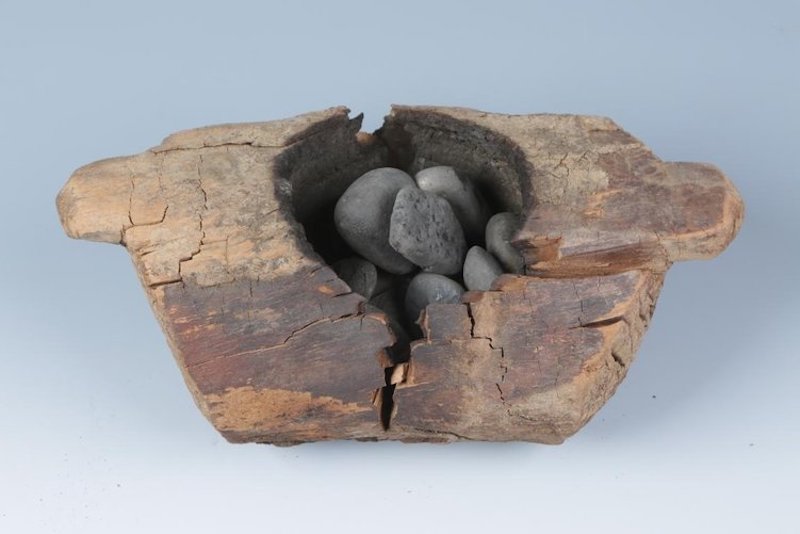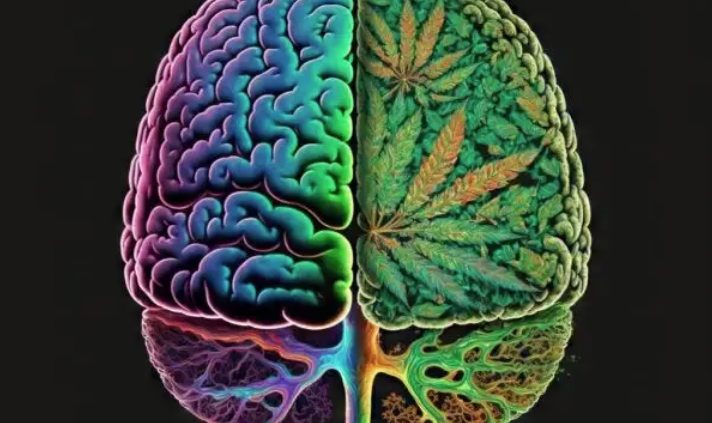Typical barbecue and burnt stones in Ancient Pamirs. This example was found in the M12 tomb in the Jirzankal cemetery and was examined for this study.

Cannabis has been grown in East Asia for thousands of years for oilseed and fiber. However, little is known about the use and cultivation of this herb for its psychoactive and medicinal benefits in ancient times. Today, although it is one of the most used psychoactive substances in the world, there is little archaeological or historical evidence of cannabis use in the ancient world.
In a study published in the journal Science Advances, preserved psychoactive components of 2,500 years old incense-like tools found in the Jirzankal Cemetery in the eastern Pamir Mountains.
Researchers have shown that people choose plants with a higher level of THC (the main psychoactive component of marijuana) and burn them as part of their funeral rituals. This is the earliest definitive evidence that cannabis has been used for its psychoactive properties.
Cannabis is one of the most notorious plants on the planet today, due to the rapidly changing laws regarding its legalization in Europe and America. Despite its popularity due to the psychoactive properties of the plant, there is insufficient information on the cultivation and use of cannabis for its ‘heady’ effects in ancient times.
The cannabis plant has been cultivated for oilseed and fiber since at least 4000 BC in East Asia. However, as in most wild populations, the rate of THC and other cannabinoid components with psychoactive effects was low in the first grown cannabis varieties. Therefore, where and when people realize and use cannabis varieties that are high in these components remain a long-standing mystery.
Many historians lead the origins of cannabis smoker to Central Asian steppes, but this argument is based only on a single passage in a single ancient text written by the Greek historian Herodot in the late one millennium BC. That’s why archaeologists have been trying to find concrete evidence to prove cannabis smoking in Eurasia for a long time, but today we have very few reliable, well-defined and correctly dated examples of early cannabis use.
In this study, researchers discovered early cannabis use when they attempted to identify what the function of ancient wooden incense was found by excavations in the high mountain areas of Western China by archaeologists from the Chinese Academy of Social Sciences.
Incense was removed from the 2,500 year old graves in the Pamir mountain range. The international research team used a method called gas chromatography-mass spectrometry to separate and identify the compounds protected in these instruments. Surprisingly, the chemical sign of the decomposed compounds exactly matched the chemical sign of cannabis. Also, this wild hemp had a higher THC level than normally found.

The data produced as a result of the research that brings together archaeologists and labors from Jena, Germany, and Beijing, China provides clear evidence that ancient people burn certain types of cannabis with higher THC levels in the Pamir Mountains.
The findings confirm examples of cannabis taken from graves in the Xinjiang region, further north of China, and in the Altai Mountains of Russia. As Nicole Boivin from Max Planck Institute of Human History Science stated, “The findings support the idea that hemp was first used for the psychoactive effects of mountainous regions in the east of Central Asia and later spread to other parts of the world.”
Marijuana probably spread as a result of trade on Silk Road
Remnants containing THC were taken from incense in a cemetery known as Jirzankal in the remote Pamir Mountains. Some of the skeletons removed from this area, which is located in the west of China today, have similar characteristics with the peoples who lived in the same age in the west of Central Asia. The objects found in the graves also seem to associate this population with the people who lived on the foothills of the west of Central Asia. Also, stable isotope studies on human bones in the cemetery show that not all of the people buried there are growing in the same area.
These data fit with the idea that the high-altitude mountain passes of Central and East Asia played a key role in the early trans-Eurasian trade route. Indeed, the Pamir region, although so remote today, may have once played a key role in the ancient trade route of the Silk Road. The Silk Road was the only and most important channel through which cultural spread could take place in the ancient world.
The study’s chief archaeobotanist, Robert Spengler of the Max Planck Institute for the science of Human History, said: “the clearing routes of the early Silk Road functioned like the wheel wires of a wagon rather than a long-distance road, making Central Asia the heart of the ancient world. Our study shows that among the cultural traditions spreading along these clearing paths is the exchange of information about marijuana smoking and certain types of marijuana that produce high chemicals.”he says.
People sought and cultivated more types of psychoactive cannabis to use at funerals
Wild hemp is not rich in terms of the level of THC, one of the psychoactive compounds in it, compared to species bred by humans. It is still unclear whether the people buried in jirzankal were actively growing hemp or simply choosing plants that produce higher THC.
One theory is that when hemp grows at higher altitudes, it produces a greater amount of active ingredients due to increased UV rays and other stress factors. Therefore, people who roam in high mountainous areas may have discovered more effective wild plants there and initiated a new species use of the plant.

Although modern cannabis is mainly used as a recreational drug or for medical applications, it may have been used quite differently in the past. The evidence presented to us by jirzankal shows that people burn cannabis in rituals commemorating the dead. These people buried their relatives in graves where they created round hillocks and striped patterns using black and white stones.
It’s not clear if marijuana has other uses, but the plant’s ability to treat a variety of diseases and symptoms was probably noticed early on.
“This study on ancient cannabis use helps us understand the cultural practices of Early Man and touches on how people intuitively became aware of the natural Phytochemistry in plants, ” said Yimin Yang, a researcher at the Chinese Academy of Sciences in Beijing.”he explains. Dr. Yang has been studying ancient organic remains in East Asia for more than a decade. “Biomarker analysis opens a unique door to the details of ancient plant cultivation and cultural communication that other archaeological methods cannot offer.”
“Given the modern political climate swirling around cannabis use, archaeological studies like this can help us understand contemporary cultural practices and the origins of faith structures, which in turn can shape policy,” professor Boivin said.
As Spengler observes, ” today’s perspectives on cannabis can vary widely between different cultures, but it is clear that this plant has a long history of medicinal, ritual and recreational use over countless millennia.”
article: Ren, M., Tang, Z., Wu, X., Spengler, R., Jiang, H., Yang, Y., & Boivin, N. (2019). The origins of cannabis smoking: Chemical residue evidence from the first millennium BCE in the Pamirs. Science advances, 5(6), eaaw1391.



